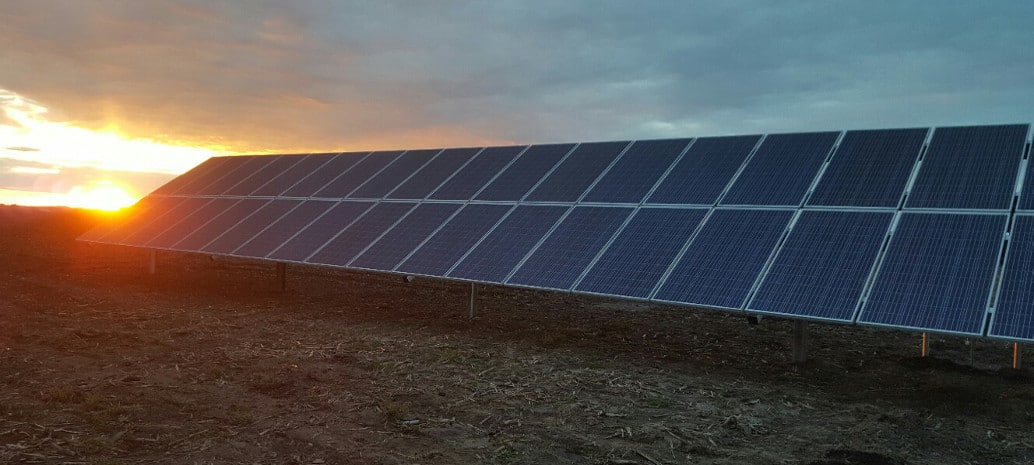In a new paper, Advanced Energy Economy (AEE) is calling on Illinois to build on its recent success in solar and other progressive energy applications to catalyze a transformed economy. AEE’s Advanced Energy Road for Illinois: How The Next Governor Can Make Illinois’ Energy System More Secure, Clean and Affordable – and Drive Jobs and Economic Development recognizes renewable energy achievements such as the Future Energy Jobs Act (FEJA), but points out that actions like FEJA will only carry Illinois so far. AEE argues that more substantial leadership will be needed in the coming years to go beyond achieving the 2025 goal of 25% renewable electricity.
The AEE paper notes that in 2017 Illinois generated around 7% of its electricity from renewable sources, less than half the national average. Wind power is the primary renewable source, with PV representing less than 0.1% of generation. And both of these metrics are below the Illinois Renewable Portfolio Standard (RPS) goal for 2017 of 8.625% from wind power and 0.115% from PV.
2017’s Future Energy Jobs Act is expected to result in an enormous boost of 3,000 additional megawatts (MW) from distributed and utility solar by 2030, in addition to 1,700 MW of new wind capacity. By 2022, Illinois’ installed solar capacity could reach 1,700 MW, which should move its ranking into the top half of states, after languishing for over a decade.
However, AEE has pointed out a number of limitations that could keep Illinois from achieving its full potential as the sixth-largest energy user among U.S. states, as well as its ability to provide an equitable distribution of installations, economic development and customer savings.
Community solar was identified as one example. The AEE paper notes that FEJA legislation essentially caps community solar at 400 MW of capacity, with a maximum individual installation size of 2 MW and no individual or company subscribing to more than 40% of a system output. The overall program cap could easily be hit, given the current interconnection queue of hundreds of installations and megawatts.
With FEJA, legislators declared their intent to see an equitable distribution of community solar by size, location and socio-economic status, and the solar renewable energy credit (SREC) rates designed by the Illinois Power Agency (IPA) and approved by the Illinois Commerce Commission (ICC) are intended encourage distribution. However, AEE says that the initial wave of community solar installations may favor maximum sized installations located in lower cost rural or exurban sites, with an uncertain makeup of subscribers.
AEE Illinois Policy Director Daniel Bloom argues that lifting community solar restrictions would enable all subscriber segments to be served, as well as providing for a more equitable distribution of installations and the economic development benefits they will bring. This is particularly true for disadvantaged populations and environmental justice communities.
Once the 400 MW limit is reached, the AEE estimates that only about 2% of residential customers would be served. This is far less than the potential market, not even accounting for nonresidential subscribers. Another limitation AEE wants lifted is the 5% capacity cap for distributed PV under 2 MW, which could be triggered with only around 1.5 GW of solar. The cap could mean more restrictive measures for solar compensation and other penalties.
In view of these impending limitations to PV, AEE’s paper calls for the following additional actions:
- Commission a legislative study that maps out how Illinois can achieve 100% renewable energy by 2050
- Prioritize funding for FEJA’s “Solar For All (Illinois)” program in the state’s annual budget proposal, including timely restoration of Renewable Energy Resource Funds critical to sustain the low and moderate income program
- Work with the Illinois Senate to confirm ICC Commissioners who understand the value potential of advanced energy technologies
- Ensure existing advisory groups created by the ICC maintain oversight of FEJA implementation, especially job training and low-income solar programs
- Address energy storage through legislation, particularly in-valuation benefits such as clean energy integration, grid reliability, system wide efficiency power quality and peak demand reduction
- Complete the “Next Grid Process”, emphasizing distributed energy resources and begin to incorporate “cloud services”, or non-wire applications, in support of distributed energy resources
- Follow up on passage of Property Assessed Clean Energy (PACE) programs with financial districts to encourage creation of county level programs
This content is protected by copyright and may not be reused. If you want to cooperate with us and would like to reuse some of our content, please contact: editors@pv-magazine.com.








By submitting this form you agree to pv magazine using your data for the purposes of publishing your comment.
Your personal data will only be disclosed or otherwise transmitted to third parties for the purposes of spam filtering or if this is necessary for technical maintenance of the website. Any other transfer to third parties will not take place unless this is justified on the basis of applicable data protection regulations or if pv magazine is legally obliged to do so.
You may revoke this consent at any time with effect for the future, in which case your personal data will be deleted immediately. Otherwise, your data will be deleted if pv magazine has processed your request or the purpose of data storage is fulfilled.
Further information on data privacy can be found in our Data Protection Policy.